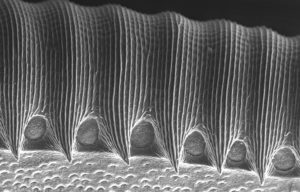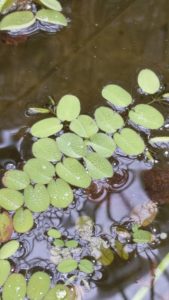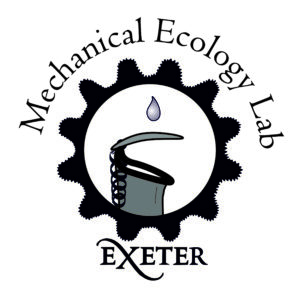Working with us
We are eager to hear from researchers and students who are as fascinated by the interplay of biology, physics and ecology as we are. If you are interested to join us with a Fellowship or studentship, please get in touch to discuss your ambitions with us!
PhD Opportunities
2 fully funded 4-year PhD studentships (£20,780 p.a. stipend plus UK Home student fees) are currently available for a start in our lab between October 2025 and January 2026. Application deadline is midnight 15th September 2025. Please contact us directly if you are interested in applying.
Studentship 1:
Function, biochemistry and development of wettable trapping surfaces in three lineages of carnivorous pitcher plants

Pitcher plants have independently evolved in three orders of seed plants, and members of all three groups utilise highly wettable, wetness-‘activated’ slippery surfaces to catch insect prey in modified, cup-shaped leaves. The unusual wettability of these surfaces is based on a combination of intrinsic, chemical composition-based
hydrophilicity and a specialised micro-texture that further enhances the wettability. Wettable surfaces in all three groups have intricate micro-topographies with striking similarities (such as parallel micro-ridges), but also clear differences (such as presence or absence of trichomes or nectar glands on the surface). This interdisciplinary PhD
project systematically investigates (1) the implications of the different topographical features for surface wetting and water spreading, (2) the chemical composition of the cuticle covering these wettable surfaces, and (3) the developmental and genetic underpinnings of surface formation. Supported by a postdoctoral Research Assistant with background in biochemistry, biophysics and bioimaging, the student will characterize the chemical composition and micro-morphology of mature and developing wettable surfaces from Asian Nepenthes, Australian Cephalotus, and South-American Heliamphora pitcher plants. Surface replicas with tuneable hydrophilicity will allow the student to disentangle the relative contributions of the chemical hydrophilicity and the topographical features to wetting and water spreading. Supported by a second postdoc with a background in molecular genetics and bioinformatics, the student will then investigate the genetic regulation of surface
development and surface wettability. The student will obtain and compare transcriptomes from (1) wettable and water-repellent surfaces within the same trap, (2) different developmental stages of the same (wettable) surface, and (3) wettable surfaces across the three independent pitcher plant lineages. Informed by the results of the initial surface characterisation, the student will identify evolutionarily conserved, wettable surface-specific candidate genes with reported function in epidermal and cuticular development. In situ hybridisation will visualise gene expression in histological sections of developing wettable surfaces, thereby confirming the spatial association of candidate genes with these surfaces. To validate the function of candidate genes, the student will utilise transient transformation techniques to alter candidate gene expression in developing traps of one or more of the studied
pitcher plant species, as well as stable transformation techniques to ectopically express candidate genes in model species (tobacco and Arabidopsis). This project offers a unique opportunity for a PhD student to acquire a very broad skill set of biochemical, biophysical, bioimaging and molecular techniques, combined with diverse data analysis and bioinformatics skills.
Application link: https://www.exeter.ac.uk/study/funding/award/?id=5599
Studentship 2:
Modification and developmental control of leaf surface wettability in floating aquatic plants

Free-floating duckweeds (Lemnoidea) and water ferns (Salviniaceae) are highly successful, fast-growing, invasive pond plants. Despite their diversity in leaf size, shape and surface texture, all species have an astonishing ability to self-right when flipped over by wind, waves or animals. Preliminary data in our lab indicate that drastic
differences in surface wettability between the upper and lower leaf surfaces are crucial for the self-righting ability. Starting from this observation, the student will employ a multidisciplinary approach to investigate the morphological, biochemical and genetic differences that underpin the differences in wettability between upper and lower leaf surfaces. The project first investigates what causes the differences in surface wettability. Contact angle measurements on the different surfaces will provide a quantitative measure of wettability. Light and scanning electron microscopy will unravel the topographical details of the surface. Artificial surface replicas with tuneable
intrinsic wettability will disentangle the effects of the surface texture from the underlying intrinsic (chemistry-based) wettability of the plant surfaces. Histological and immuno-histochemical staining, coherent Raman scattering (CRS) and transmission electron microscopy will elucidate the detailed layering of the epidermal cell wall and cuticle, as well as the chemical composition of the layers. Informed by the results from the above, the project then investigates how the plants make leaf surfaces with such drastic differences in wettability. The student will extract RNA and sequence transcriptomes from the upper and lower leaf epidermis. By mapping differentially expressed genes to genes with known function in epidermal and cuticular development, the student will identify candidate genes for the modification of cuticular composition. In situ hybridisation will confirm the localisation of gene
expression to the epidermal layer. Finally, the student will employ transient and stable transformation techniques to knock out or overexpress candidate genes. Contact angle measurements and surface analysis (as described above) on surfaces of transformed plants will validate the gene function. This project offers a unique opportunity
for a PhD student to acquire a very broad skill set of biochemical, biophysical, bioimaging and molecular techniques, combined with diverse data analysis and bioinformatics skills. Two postdoctoral Research Assistants with backgrounds in biochemistry and bioimaging, CRS, and molecular genetics, respectively, will provide expert training and advice at different stages of the project.
Application link: https://www.exeter.ac.uk/study/funding/award/?id=5600
Student projects
If you are a student at the University of Exeter with an interest in plant biomechanics, carnivorous plants, plant-insect interactions or interdisciplinary projects at the intersection of biology, physics and engineering, consider doing a research project in our lab! We offer various research projects for final year BSc and MSc students in Biosciences (modules BIO3096 and BIOM569), but we are equally open to host summer projects. If you are a student in Engineering or Physics who would like to work with us, please get in touch to explore options – we are keen to hear from you! Please also contact us as early as possible if you have your own project idea that would fit well into our lab remit – we might be able to accommodate your interests and ideas in the project descriptions for the next academic year!
Collaborations
We strongly believe in the power of collaboration. From our experience, the best science emerges from multiple minds with complimentary experience and skills combining forces towards a common goal. Plus, working together is far more fun than trying to outcompete each other! We currently maintain collaborations with scientists as close as in the neighbouring building and as far as the tropical kingdom of Brunei or the West coast of Canada. If you are interested in collaborating with us, please do not hesitate to get in touch and discuss your ideas!
